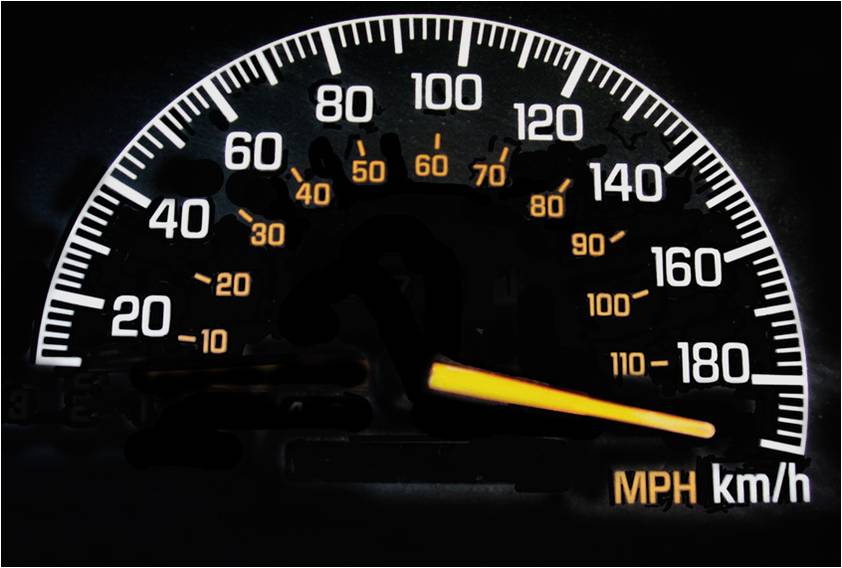This is the second in my continuing series on Personal Performance Metrics. Last week, I wrote about determining your Ideal Pipeline Volume. Knowing the number of deals you need to be working in order to make you number is one of the most important things for each sales person (and manager) to track.
There’s a problem with this, however. if you have the right number of deals in your funnel–but they aren’t moving, then you just won’t make your number. You can’t just be moving deals into the pipeline or funnel, they have to be moving through the pipeline . This is generally called pipeline flow or velocity.
There are a number of ways to calculate pipeline flow or velocity. I have to confess, I really don’t understand some of them, it seems you have do have an advanced degree in computational mathematics to understand them. I tend to favor looking at the sales cycle–in days.
Here’s how I do it. Depending on your sales process, you may have to adapt it a little to fit what you do.
I start counting the sales cycle from the day I qualify the opportunity. I simply track the number of days I work the deal through closure. Prospecting and qualifying tends to take a long time for me. I don’t enter opportunities into my funnel until they are qualified, but once I have a qualified deal, my sales process is relatively fast, it’s about 90 days.
So at its simplest, to track flow or velocity, I look at the number of days a deal has been in the funnel and compare it to my average sales cycle. Each deal will be different, but if I keep them at my average sales cycle or better, I know I’m getting the right flow through my funnel.
But this isn’t as useful as it might be. I want to have some interim milestones, so I can see if I’m on target or if things are slowing down and I might have to start trying to move things faster. In my sales process and funnel, after I qualify, I have three steps or stages: Discovery, Proposing, Closing. From past experience, I know that Discovery takes up to about 45 days, developing and presenting my Proposal may take another 20 days, and Closing–finalizing the project definition and contracts, takes another 15 days. I know these because of may past experience–and here’s where a CRM system is very helpful, my CRM system tracks all this data for me, so I don’t have to calculate it myself.
So now, I know that if a deal is moving at about the right rate, after roughly 45 days, I should be in the proposal stage, after 65 days, we should be in the closing stage, and I’ll be on target for closing the deal roughly on time. If all of my deals are flowing through roughly like this, I have the right deal flow or velocity. If I look at deals that have been in discovery for 50 or more days, I know they are sloing down. If a lot of deals are slowing down, I know I’m in real trouble and the flow or velocity has slowed unaccaptably. I have to do something to fix the problem.
CRM systems are ideal for tracking flow and velocity. When I look at my pipeline, in my CRM system, it tells me how long each deal has been in each stage, as well as the average time for that stage. I can immediately see what’s moving, and what’s stuck.
I watch the flow of the deals carefully. When something starts slowing down, I dive into it to understand what’s happening. Did it slip my mind, have I been busy on other things and forgotten to follow up with the customer? Is something happening with the customer that is slowing this down? Can I do anything to get the deal “unstuck.” Sometimes, the customer has just gotten busy with other things, so we need to get them to pay attention to this deal.
When I look at people’s pipelines, I’m often amazed. I see deals that have not moved for 100’s of days. I probe the sales person, “Is this real? How could it possibly be in the funnel this long? Does the customer really intend to do something, is there anything you can do to help move this forward?
When you track your own performance, make certain you are pursuing enough opportunities. Make sure your deals are flowing at the right rate. Be attentive to the deals that are stuck, look at how you can move them forward. Hopefully, you have a CRM tool that helps you identify these things.
For managers, in reviewing the pipeline with your people, don’t immediately dive into reviewing deals. Look at the number of opportunities in the funnel, look at deal flow. Help your people understand how these work. Look at stuck deals, explore how you can get them moving.
Understanding your sales cycle time is critical in looking at pipeline flow and velocity. But there are a lot more things we should worry about in looking at sales cycle time. Next Friday, we’ll focus on those.

Leave a Reply